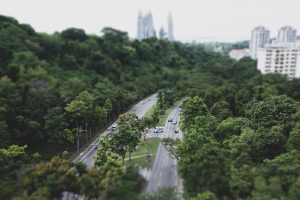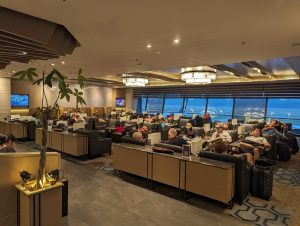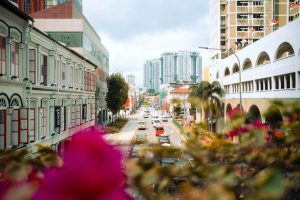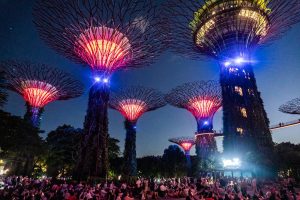Singapore is an amazing city with plenty to explore and I absolutely love living here. With one of the largest and most beautiful airports in the world and being the hub for SE Asia travel, Singapore sees many travelers every year. Whether you’re planning to visit Singapore or are thinking of making an extended layover before going to Bali, this article will help you plan your trip.

I’ve previously written about how to spend 1 full day in Singapore but I think this is a bit too rushed to properly see the whole city. Singapore deserves more and I think having two or three days in this city is perfect. I’ll go into detail about how to plan a three day itinerary of Singapore so you can relax and really get to know the city. Similarly, if you only have two days, I will tell you how to best prepare for that as well near the end.
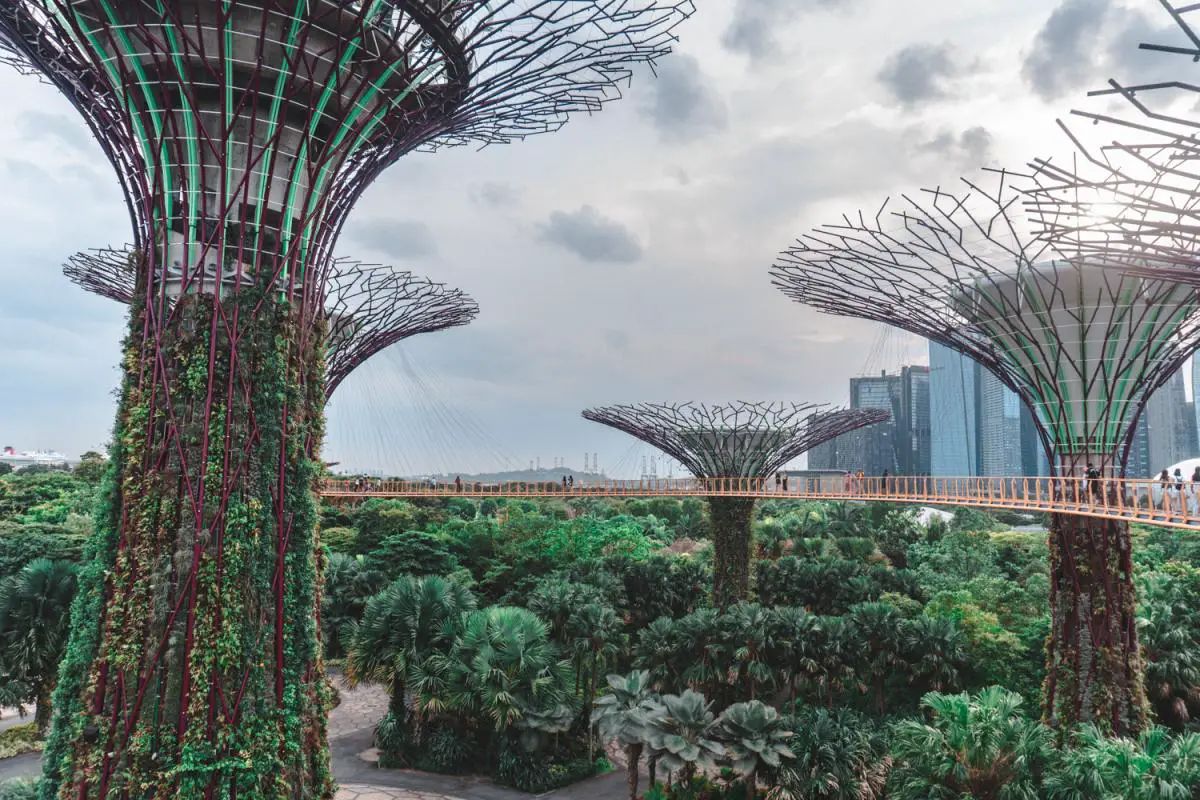
Getting to the city from Singapore Changi Airport
Like all modern cities, Singapore is equipped with an extensive subway system, the MRT. From the airport, it is an easy ride on the MRT to get to downtown Singapore. From the airport to Marina Bay is a 45min ride on the MRT and $2-3 SGD. Signs are clearly marked for the subway so even the most novice of travelers can’t get lost in this airport.

For how prosperous and expensive Singapore is as a city, cabs are a great bargain. Cabs to downtown Singapore are $20-25 SGD and are much faster than the train. There are many ride hailing apps in Singapore with the most popular being Grab, Gojek, TADA, and ComfortDelGro. Prices have increased noticeably after COVID however.
If you’re only staying here for one day, I would download Grab as it is the most popular option in the city.
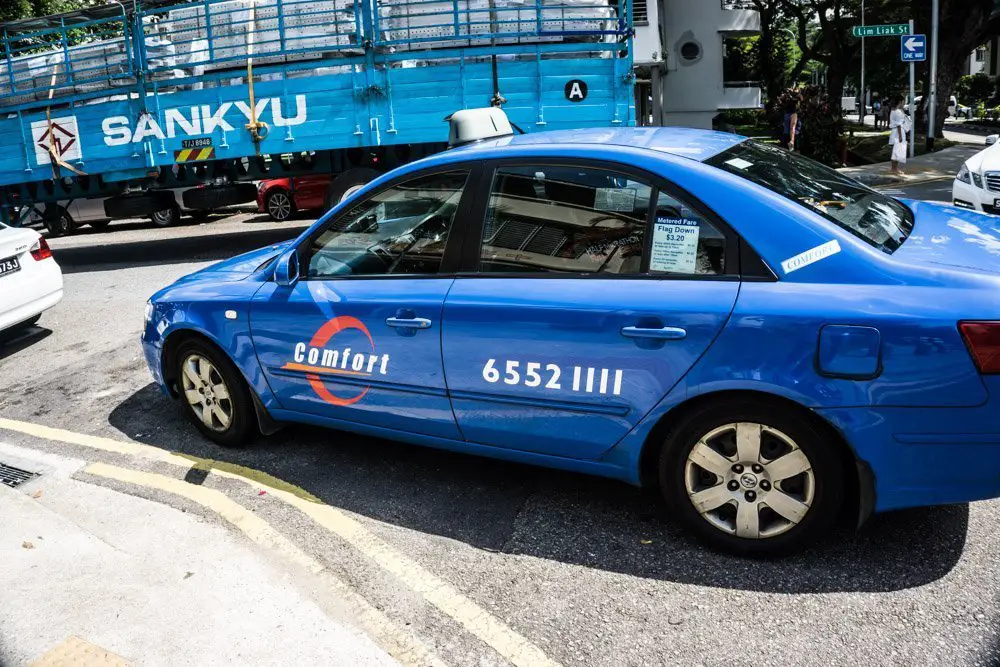
I am a die hard public transportation user so I started off my time taking the MRT but eventually realized how affordable cabs were so I ended up taking cabs for most of my time here. Plus Singapore is scorching hot so one can only walk around for so long before yearning for sweet sweet AC.
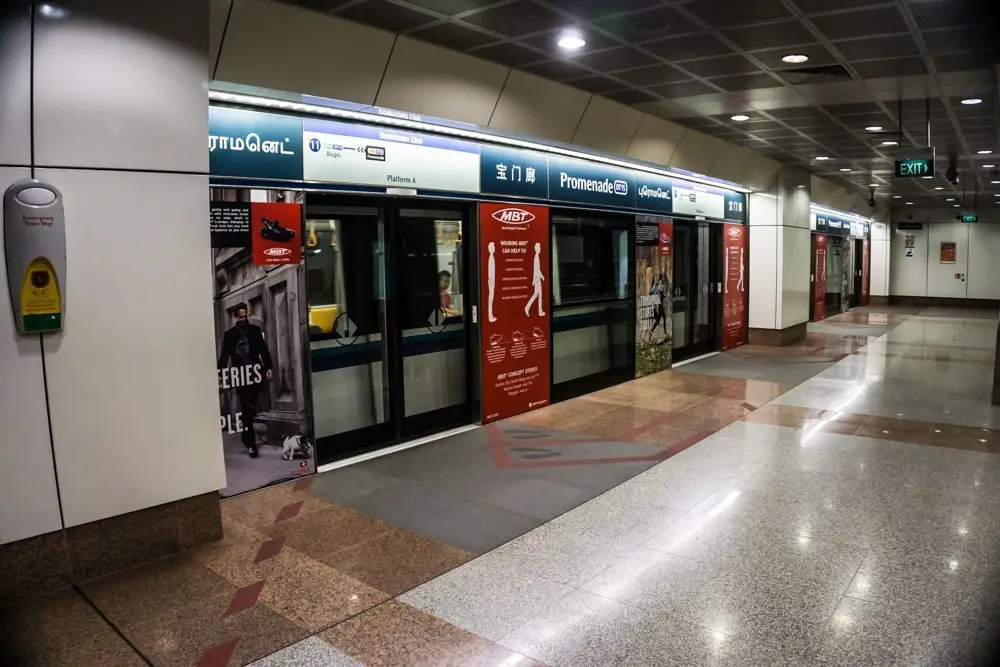
Day 1 – Breakfast In Singapore: 8am-9am
The three day itinerary for Singapore visits the same sights and activities as my one day itinerary but spread out over more days to allow you to relax and enjoy what you’re seeing. There will also be a few more sights added on to the itinerary since there’s so much more time to do things.
Start off the day in Singapore right with a solid breakfast. This can be had in your hotel or simply venturing out onto the streets of Singapore to find your meal.
Eat Kaya Toast – The Typical Singaporean Breakfast
THe most famous Singaporean breakfast is Kaya Toast, which is essentially just coconut jam slathered over toast and served with a hard boiled egg. The toast is nothing special and if you’re coming from Europe, you might ask yourself it his can actually be real bread. To be honest, I’m not a fan of this dish and don’t think it is anything special especially when there is so much more to eat.
Instead, I would go to the hawker centers and go eat roti canai which is 1000x tastier. This dish is traditionally Malaysian and you’ll find this literally everywhere in Malaysia but it is not as easy to find in Singapore. You’ll also call it referred to as Prata in Singapore but they are the same things.
Explore Chinatown – 9:30am to 11:30am
Chinatown in Singapore is a historically rich and vibrant neighborhood that has been an important part of the city-state’s cultural heritage since the early 19th century. The neighborhood was established by early Chinese immigrants who came to Singapore to work as laborers, traders, and merchants. The majority of these immigrants were from the southern provinces of China, including Fujian and Guangdong, and they brought with them their language, customs, and traditions.

In the 19th and early 20th centuries, Chinatown was a bustling commercial hub and was home to many small businesses and shops. The area was also the center of social and cultural life for the Chinese community in Singapore, with temples, clan associations, and cultural organizations located throughout the neighborhood.
During World War II, much of Chinatown was destroyed, and many residents were interned by the Japanese occupiers. After the war, the neighborhood was rebuilt and once again became a hub of commercial and cultural activity.
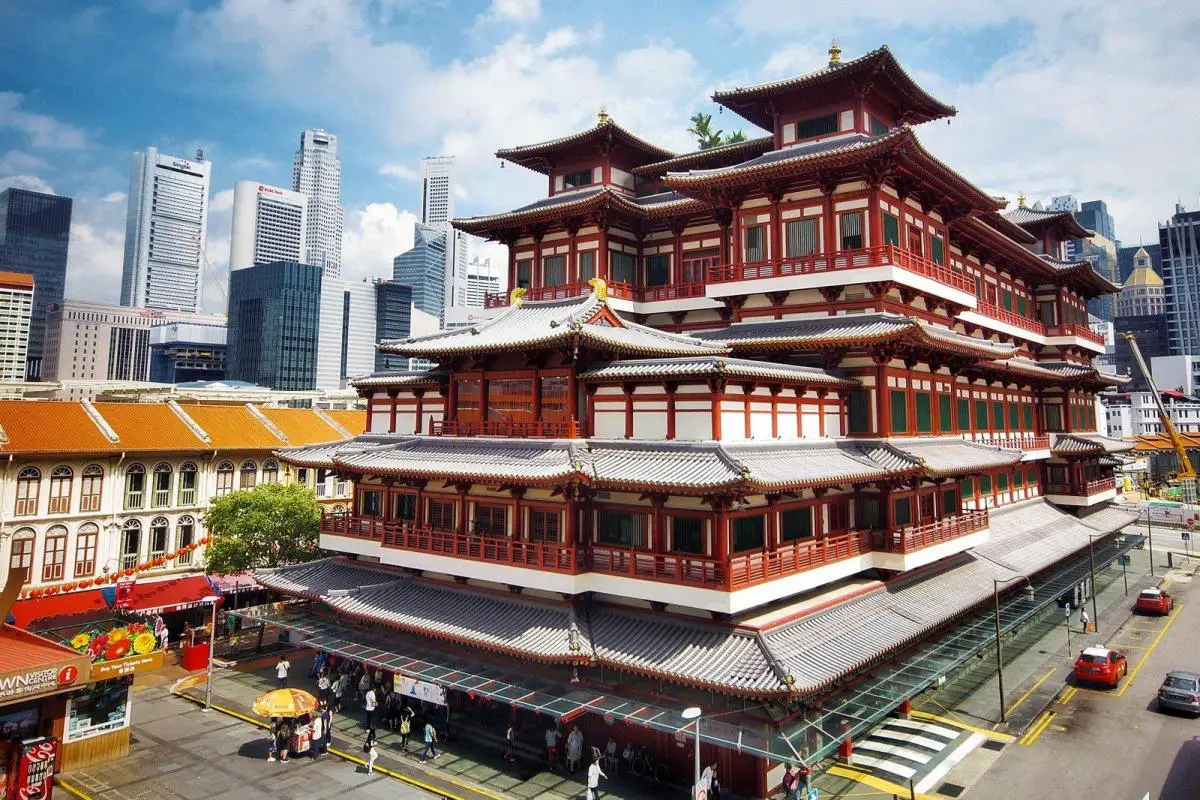
In the late 20th century, the Singapore government began to make efforts to preserve and restore many of the historic buildings in Chinatown. The government recognized the important cultural and historical significance of the neighborhood and sought to protect its unique character. Many of the traditional shophouses were restored and converted into museums, cultural centers, and tourist attractions, while the temples, clan associations, and cultural organizations were also preserved and protected.
Today, Chinatown is a popular destination for both locals and tourists, and is renowned for its rich cultural heritage, traditional architecture, and vibrant street life. The neighborhood is home to many traditional Chinese shops, temples, and cultural centers, including the Thian Hock Keng Temple, one of the oldest and most significant Chinese temples in Singapore.
While you’re here, also explore the famous Telok Ayer and Amoy streets which are adorned with beautiful shophouses (colonial style European buildings) filled with restaurants, bars, and businesses. There isn’t much to see here per se but rather it makes for a beautiful street to take photos and see the day to day life of Singapore. This area is also home to the city’s financial district and you’ll see many people coming and going from their work on a weekday.
Day 1 Lunch: Eat at China Town Hawker Center
For lunch, visit the famous Chinatown hawker center located in the heart of Singapore’s Chinatown. This is one of my favorite hawker centers in Singapore as the offerings are incredible and diverse. Hawker centers are Singapore’s version of street food with a huge open air building housing dozens of different stalls serving that owner’s specialty. Chinatown has at least 100 different stalls so you’ll never get bored of the offerings!

Some of my favorite Singaporean foods are the following:
- Chicken Rice: Chicken Rice is a staple dish in Singapore and is widely considered to be the national dish. It is made with poached chicken served over fragrant rice cooked in chicken broth and flavored with ginger and garlic. Don’t worry, chicken rice is one of the more healthier dishes you can find in Singapore.
- Char Kway Teow: Char Kway Teow is a popular street food made with flat rice noodles stir-fried with soy sauce, chili, egg, and a variety of ingredients such as seafood, meat, and vegetables.
- Laksa: Laksa is a spicy noodle soup that is widely popular in Singapore and Malaysia. It is made with rice noodles in a coconut-based curry broth, and is typically served with seafood, chicken, or tofu.
- Nasi Lemak: Nasi Lemak is a traditional Malay dish that consists of rice cooked in coconut milk, served with a variety of side dishes such as fried anchovies, peanuts, hard-boiled eggs, and spicy sambal sauce.
- Satay: Satay is a popular street food in Southeast Asia that consists of skewers of grilled meat, usually chicken or beef, served with a spicy peanut sauce.
- Roti Prata: Roti Prata is a type of Indian flatbread that is popular in Singapore and Malaysia. It is often served with a variety of dipping sauces and is typically eaten for breakfast or as a snack.
- Bak Kut Teh: Bak Kut Teh is a flavorful pork soup that is popular in Singapore and Malaysia. It is made with tender pork ribs simmered in a broth of herbs and spices, and is typically served with steamed rice.
You’ll quickly realize the food is amazing and incredibly affordable for how expensive of a city Singapore is. A typical dish of chicken rice will be $4-5 SGD.
The more people you’re with the better as you’ll be able to try more than one thing. Don’t feel guilty however, I ate at three different stalls the first time I came here!
Day 1 Afternoon: Visit Gardens by the Bay
After lunch, it’s time to walk off all that food by visiting one of Singapore’s most iconic attractions. The Gardens by the Bay is a large park and botanical garden in the heart of Singapore, located in the Marina Bay area. The park covers an area of 101 hectares and was officially opened in June 2012. It has since become a popular tourist destination, attracting millions of visitors each year. A thorough visit the the Gardens by the Bay will take 3 hours so dedicate your first afternoon to this activity.

The Gardens by the Bay was created as part of the government’s efforts to transform Singapore into a “City in a Garden.” The park was designed to showcase the country’s tropical flora and fauna, as well as to educate visitors about the importance of preserving the natural environment. Nowadays, tourists will almost immediately recognize the enormous flower shaped towers emanating light throughout the city.
The Gardens by the bay is a pretty big area to visit and will likely take you a little too long to visit everything for a one day itinerary. Nevertheless, you can walk through it in 2-3 hours no problem. Make sure to read my detailed guide of the Gardens by the Bay!
Cloud Forest in Gardens by the Bay
The two main attractions are the Cloud Forest and the Flower Garden. While walking outside around the Gardens is free, these two greenhouses are not. Admission for both exhibits was $35 SGD (~$25 USD). The Cloud Forest is absolutely incredible. As I walked in, I could immediately feel the A/C of the greenhouse cooling me down after walking through the unforgiving Singapore heat. You’re greeted with a giant man made waterfall 35m high.
Visitors enter into this “mountain” if you will, and take a lift to the peak of the structure, also known as the Lost World. It is completely man made which was mind blowing considering they seriously had streams, trees, and plants that dwarfed anything I’d seen before. After taking an elevator to the top of the falls, I slowly made my way down via a spiral walkway to enjoy the views.

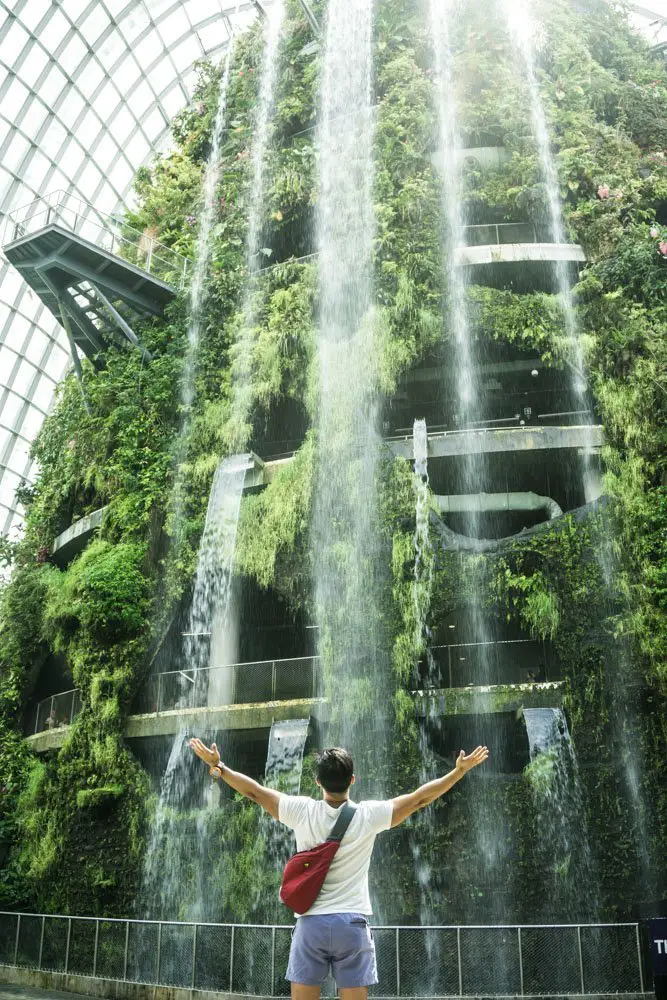

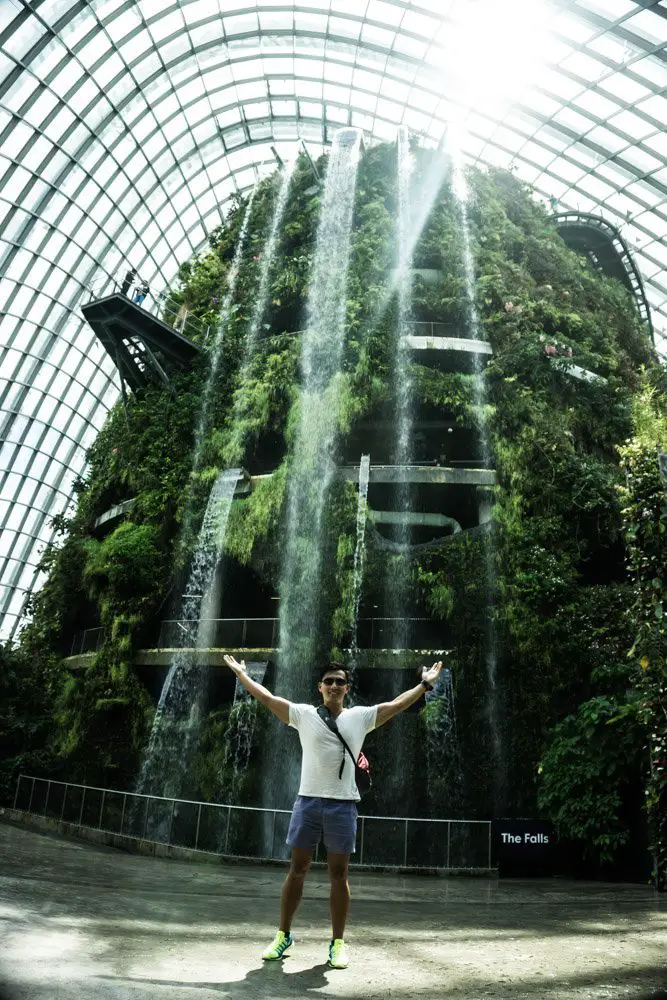

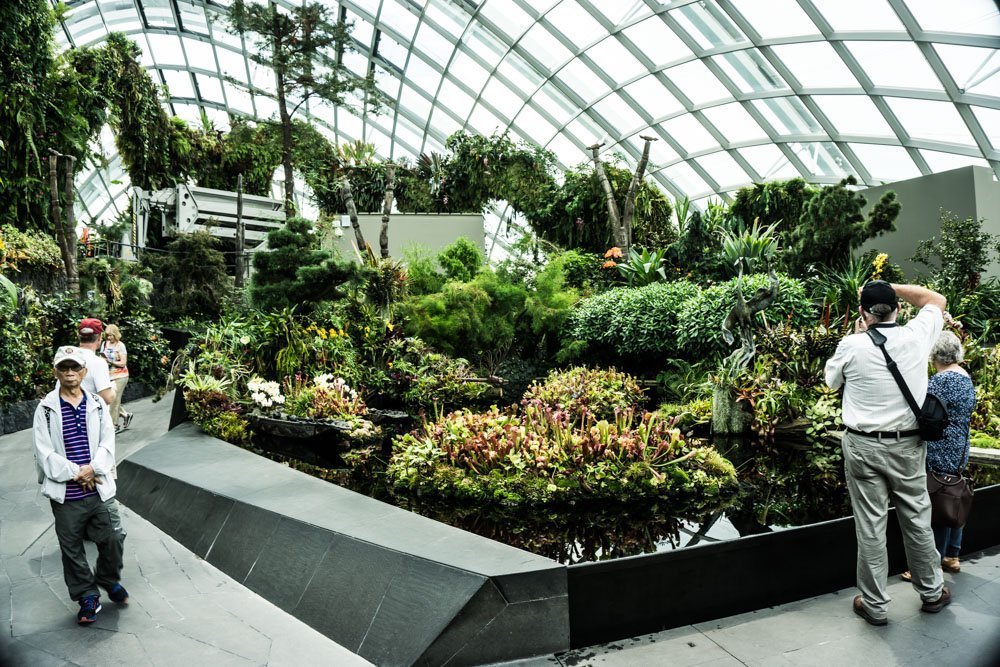

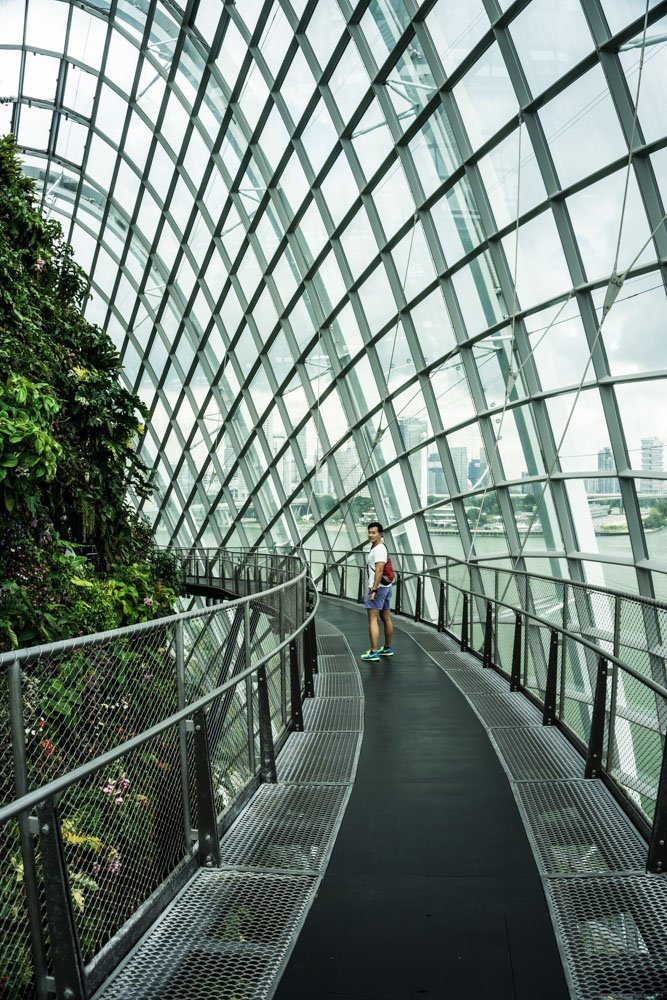
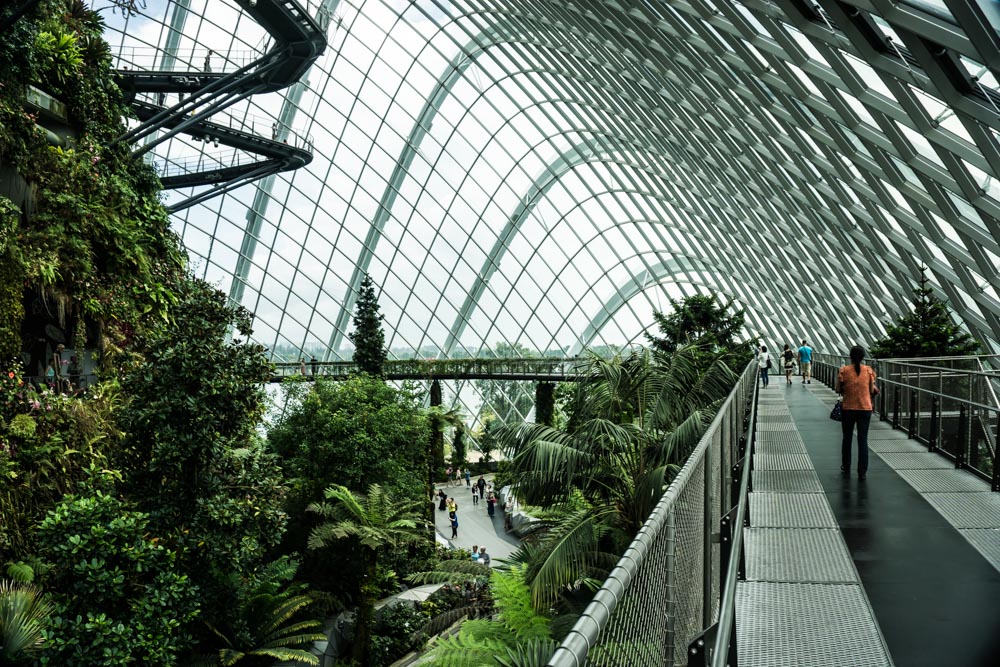

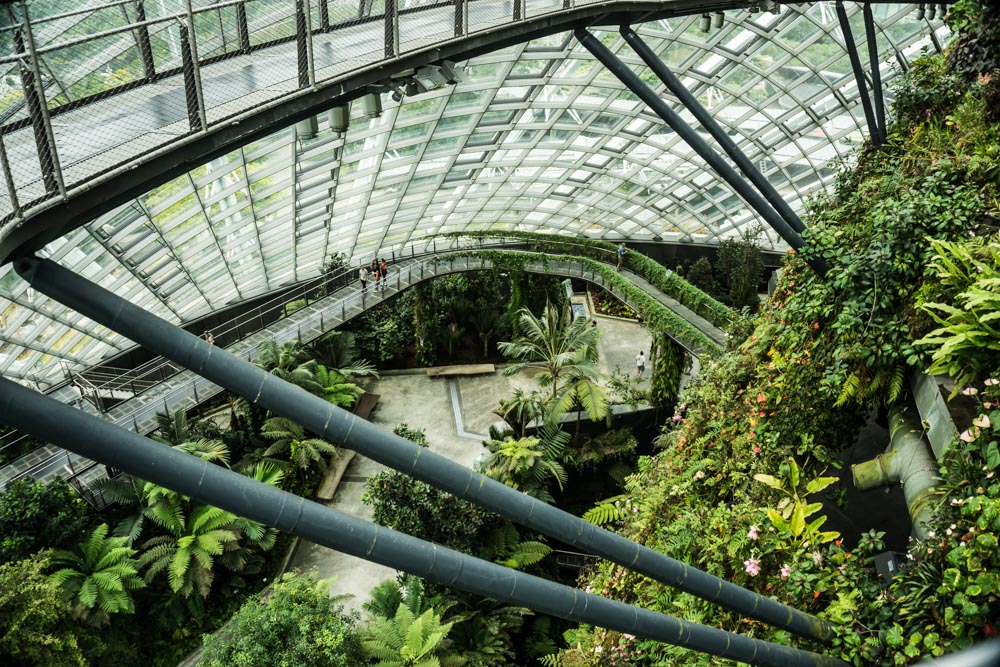
Flower Garden
The Flower Garden was less impressive than the cloud forest in my opinion but still a unique sight. It’s a huge indoor garden home to hundreds of species of plants from all over the world. It’s organized by region so one region will be all trees/plants from Africa, another will be the Mediterranean, South America, etc. The place is so big, it houses the African baobabs indoor! It does not however, house the coolest baobab of them all, the Madagascar giant baobabs 🙂


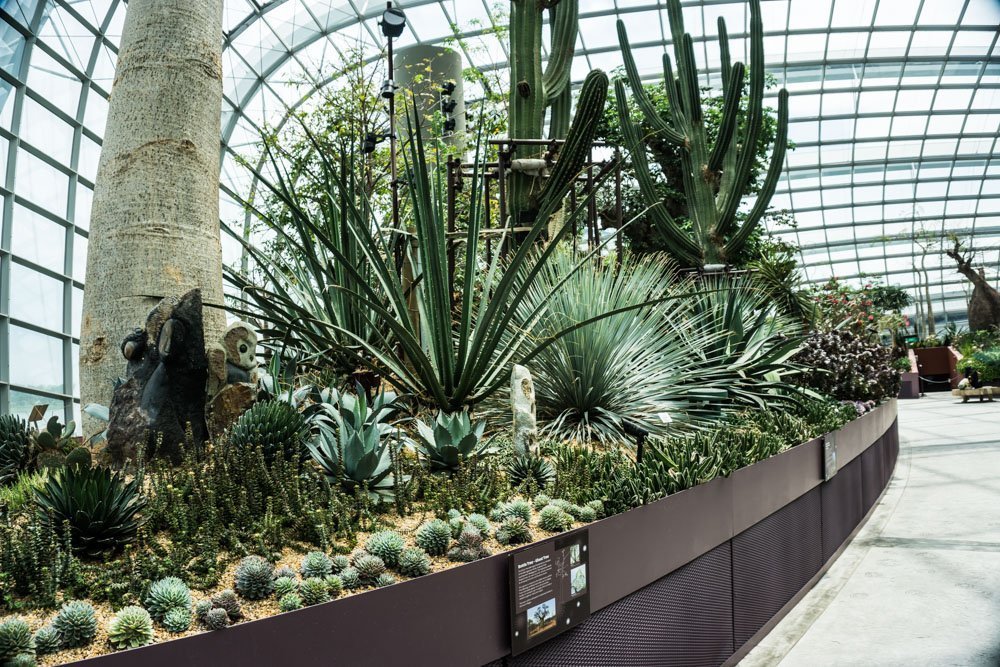
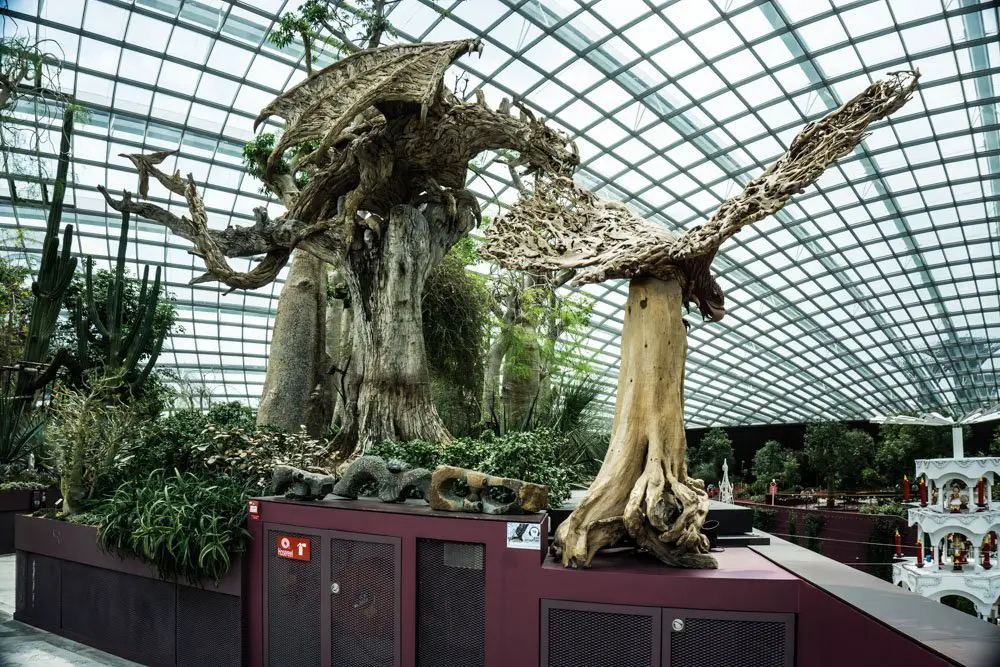
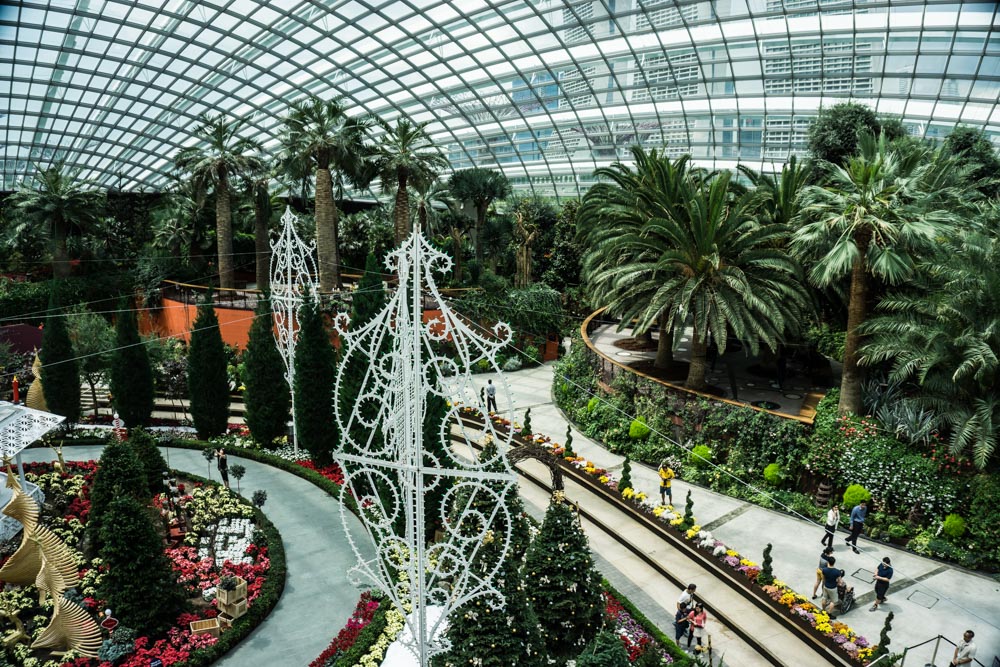
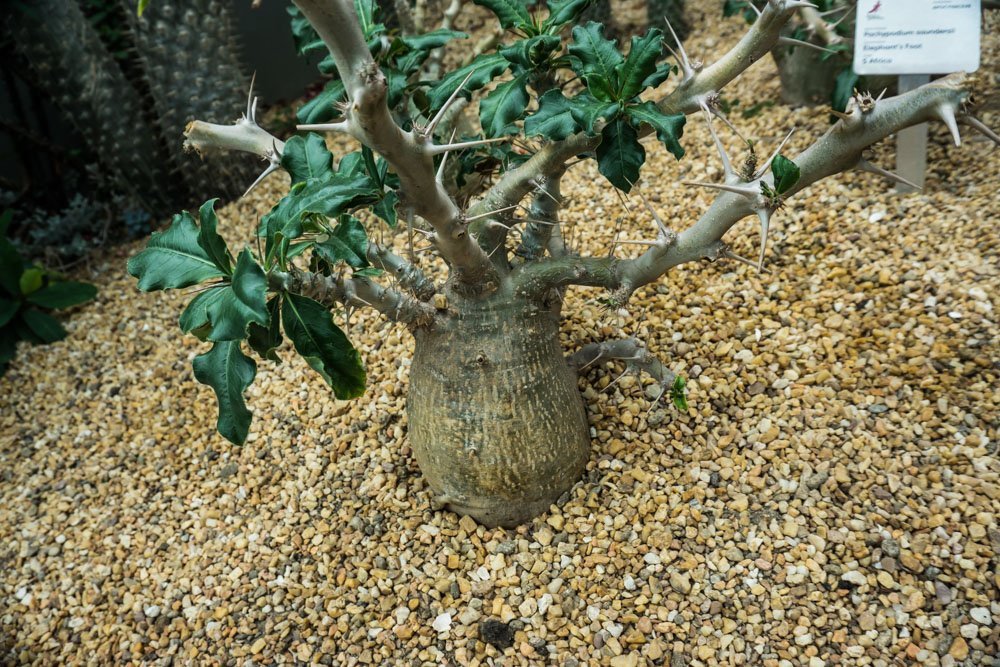

Day 1 – Sunset: Marina Bay Sands Hotel
The Marina Bay Sands hotel is located right next to the Gardens by the Bay. This enormous three building structure is without a doubt the most iconic image of the country.
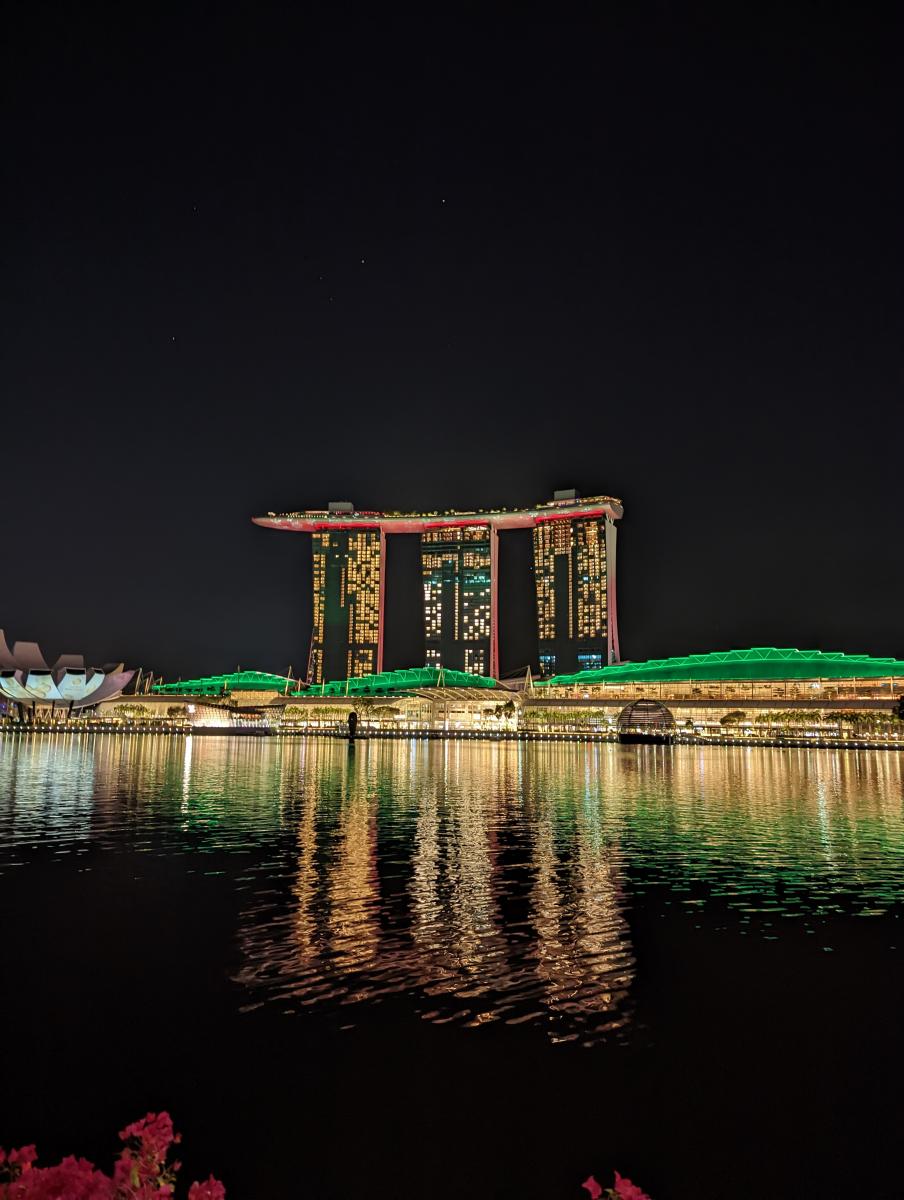
This rooftop is well worth the visit for the best views of Singapore. It is also famous for the world’s largest infinity pool with arguably the most epic views of any pool in existence. Once upon a time, they allowed the gawking tourist to pay for access to this pool (and 100 selfies) but nowadays, ONLY guests of the hotel may access the pool. It’s not a cheap hotel, but if I came back, I’d consider shelling out the dough for a 1 night stay just to use this pool!

Aside from the pool which is only accessible to hotel guests, you can soak in the same views from the rooftop bar Ce La Vie. This bar offers you unobstructed views of the Singapore skyline. Being so close to the financial district, the rooftop bar attracts a mix of businessmen and tourists. This is the perfect place to grab a drink for the sunset. Make sure you visit the Ce La Vie Lounge and not the skybar. The lounge is adjacent to the infinity pool and has much prettier views of the skyline in my opinion.

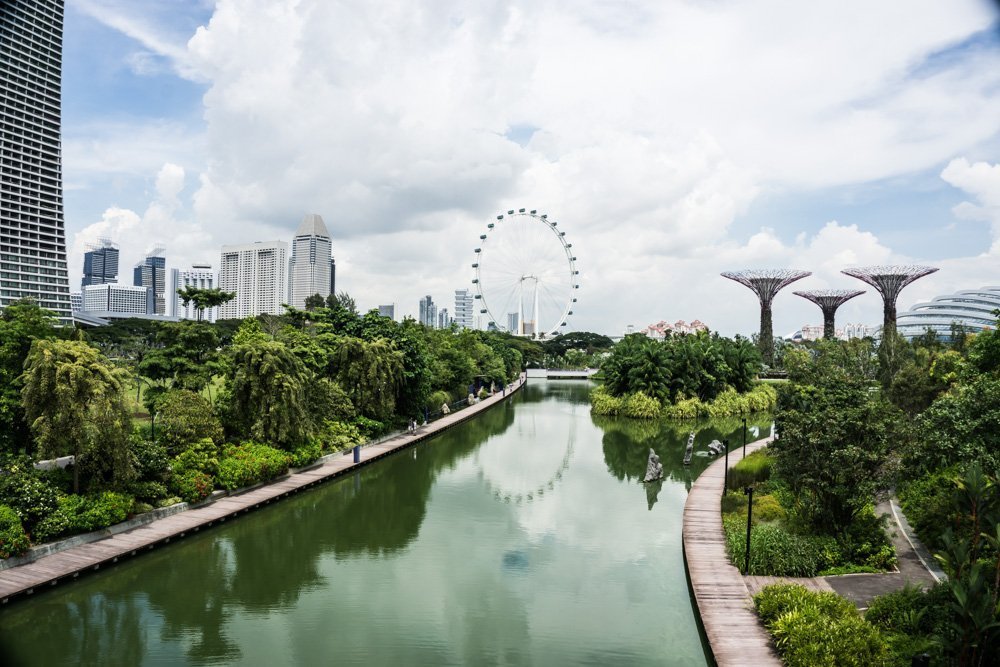

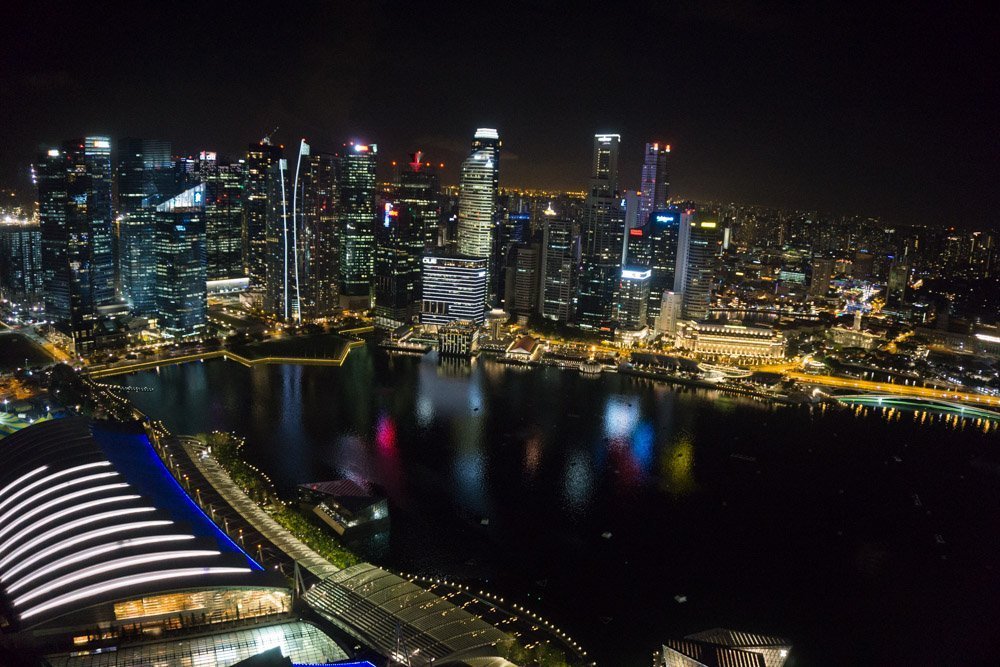
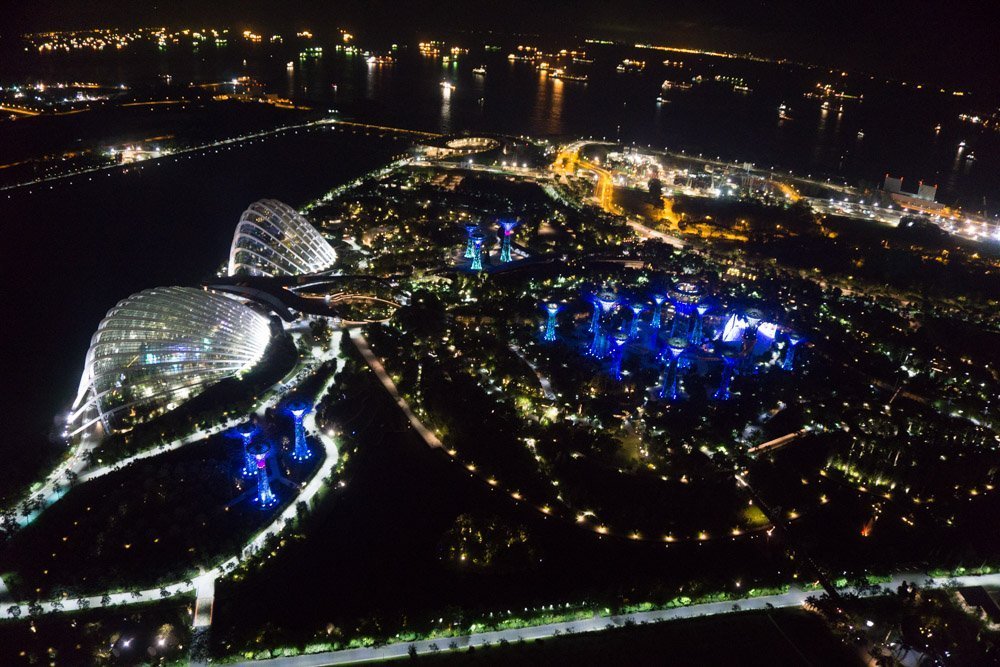
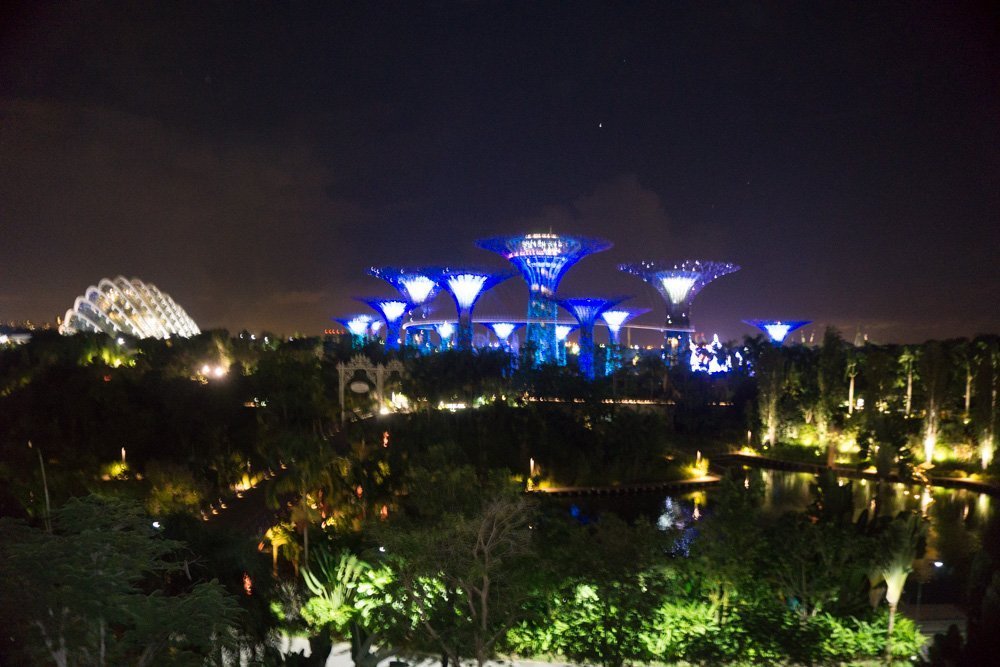
For the best pictures, I recommend the skybridge connecting the Gardens by the Bay and the Marina Bay Sands.
If you’re visiting Singapore with Sunday as one of your days, consider the champagne brunch at the Lavo restaurant at the top of Marina Bay Sands. This all you can drink champagne brunch paired with all the lobsters and prawns you can handle is an amazing deal. It only happens on Sunday so make sure to reserve well ahead of time!
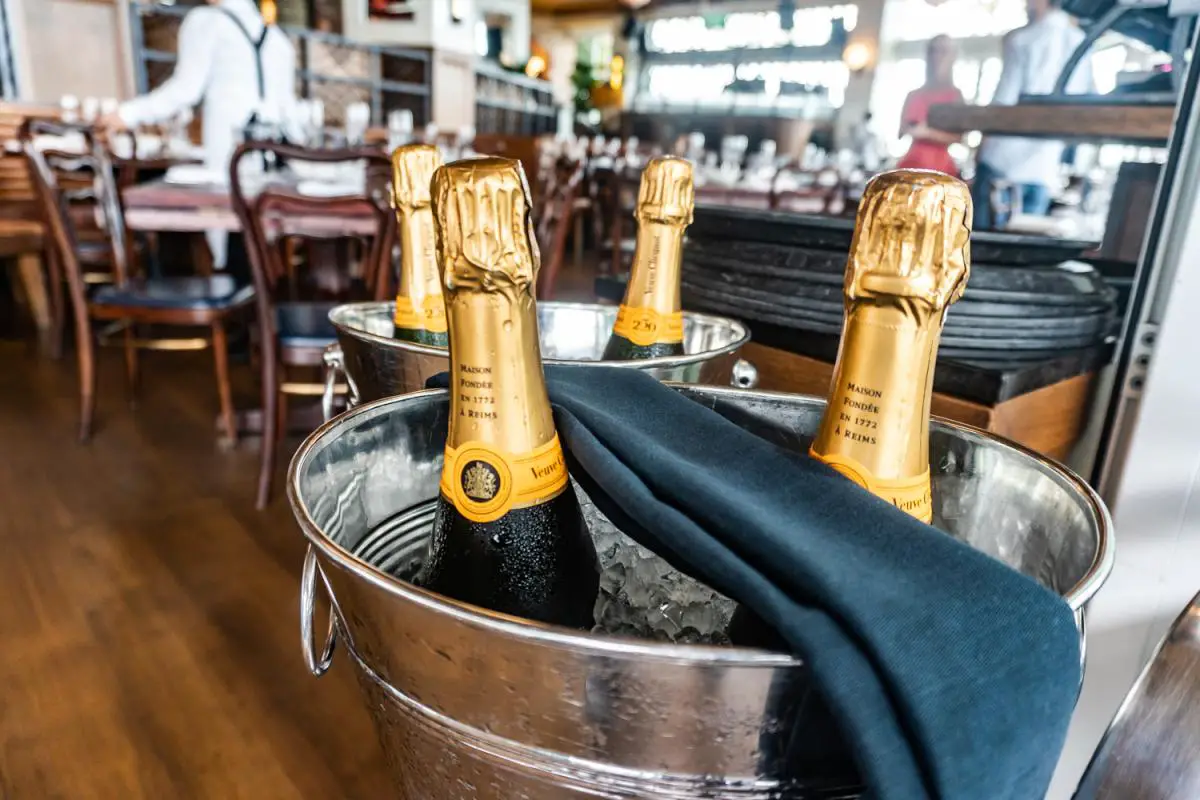
Shopping at Marina Bay Sands Mall
For the big shoppers, this hotel is home to Singapore’s trendiest and fanciest shopping mall, stocked full of all the name brands one can think of. This is probably one of the nicest malls I’ve ever seen and is definitely the most high end mall in Singapore. You’ll find every luxury brand you can think of here.
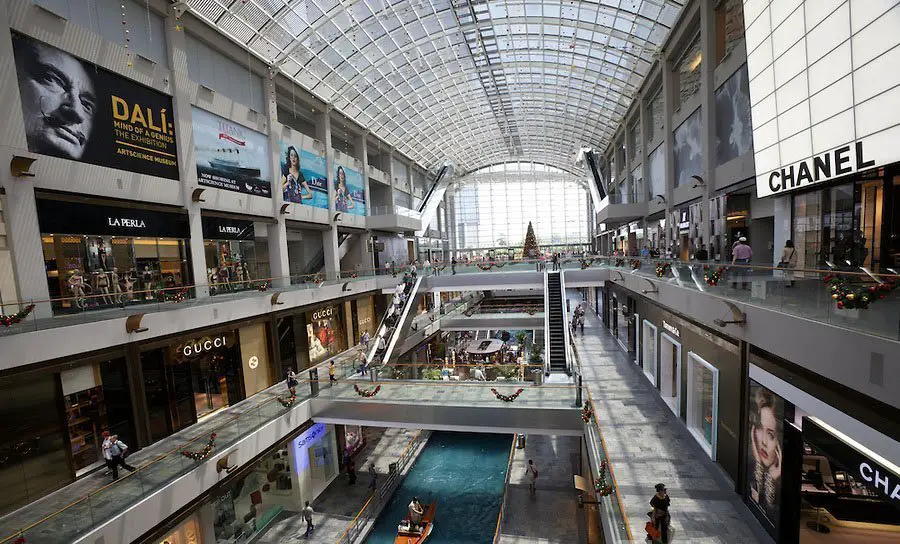
Louis Vuitton even has its own store on the water which is an architectural masterpiece in its own!

7:00pm – 8:30pm: Dinner at Lau Pa Sat
Once the sun sets, it’s time to go for dinner. While there are countless restaurants to visit in Singapore, I think if you only have a day, you might as well go to another hawker center and get acquainted with the local experience.
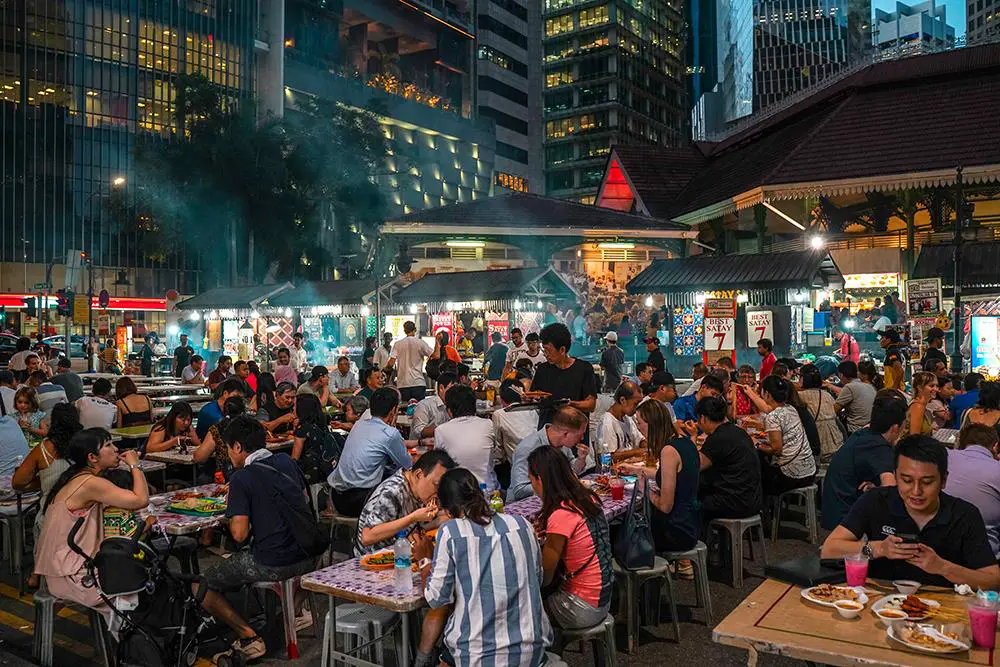
Lau Pa Sat is located in the heart of the city center in a beautiful traditionally themed building. This is one of the most upscale hawker centers in the city as you’ll quickly see with the equal mix of locals and tourists. They even have free wifi service which is unheard of in other hawker centers. Prices at Lau Pa Sat are also 20-30% higher than other hawker centers as you can expect.

The main reason to come to Lau Pa Sat however is for the satay station. Satays, or meat on skewers are in full swing outside on the street in front of the hawker center. There are 20 stalls lined up outside grilling marinated meats over hot charcoal. Grab an order of skewers with an ice cold beer and sit outside on the street to enjoy. I always take out of town people for Lau Pa Sat at least once just because of the great ambiance.
Day 2 Morning – Visit Kampong Glam
For the morning, I will focus on understanding the different racial groups that make up Singapore and visiting the areas that are most reflective of their history and culture. Long story short, Singapore is majority Chinese ethnicity but is also home to ethnic Malay and Indians. These three racial groups all immigrated to the Singaporean peninsula at various times in history and collectively have made it home.
In terms of its history, Kampong Glam was established in the early 19th century as the center of the Arab and Malay communities in Singapore. The neighborhood was once home to the Sultan of Johor, who ruled over the city-state during the colonial period. The Sultan was a powerful and influential figure in the city-state and his palace, the Istana Kampong Glam, was the center of the Arab and Malay communities in Singapore.

In the 20th century, Kampong Glam underwent significant changes, with many of the traditional shophouses being demolished and replaced by modern buildings. However, in recent years, the Singapore government has made efforts to preserve and restore many of the historic buildings in the neighborhood, and today, Kampong Glam is once again a vibrant and culturally rich neighborhood, renowned for its unique atmosphere and rich cultural heritage.
First stop on the 1 day itinerary of Singapore is the beautiful neighborhood of Kampong Glad. Kampong Glam is a historic neighborhood in Singapore that is renowned for its rich cultural heritage and unique atmosphere. Located in the heart of the city-state, Kampong Glam was once the center of the Arab and Malay communities in Singapore and is now one of the city’s most vibrant and interesting neighborhoods.
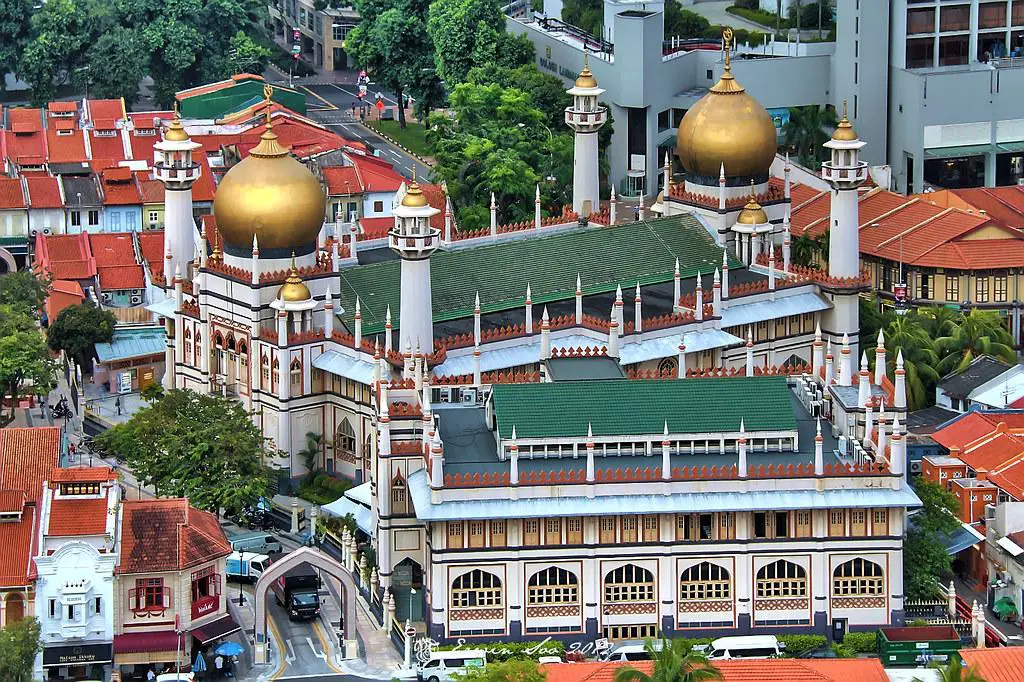
Visit the Sultan Mosque
The Sultan Mosque is one of the most important religious sites in Singapore and is the center of the Muslim community in the city-state. It is also one of the largest mosques in Southeast Asia and is a beautiful and peaceful place to visit.
Explore Arab Street
Arab Street is the main street in Kampong Glam and is known for its vibrant and eclectic atmosphere. It is home to many traditional shops and boutiques selling textiles, spices, jewelry, and other cultural goods.
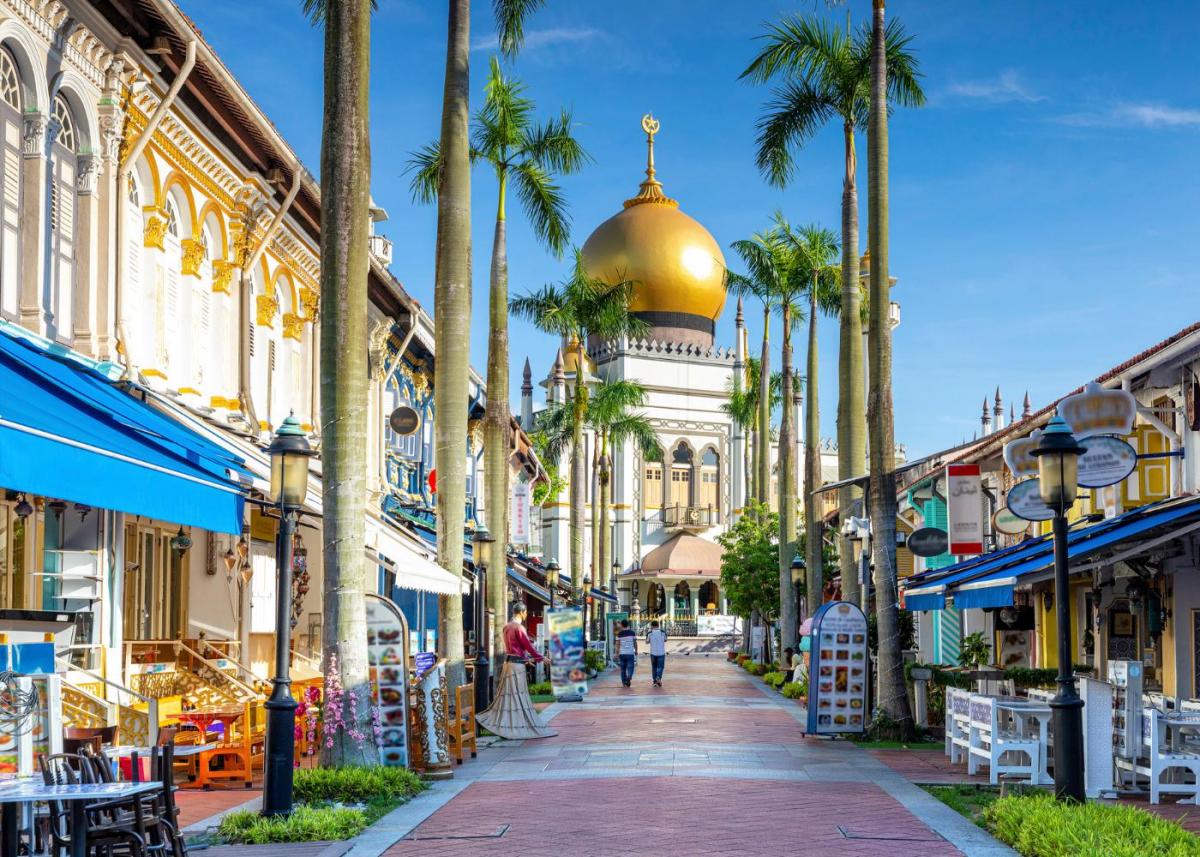
Kampong Glam is known for its traditional crafts, including textiles, jewelry, and other decorative items. There are many shops selling these items along Arab Street, making it a great place to find unique and authentic souvenirs.
Visit the Malay Heritage Center
The Malay Heritage Center is a museum dedicated to the history and culture of the Malay community in Singapore. It is housed in a restored palace and provides a fascinating glimpse into the rich cultural heritage of the Malay community in Singapore.
Kampong Glam is home to many historic shophouses, many of which have been restored and preserved as cultural centers, museums, and galleries. These buildings are a testament to the rich cultural heritage of the neighborhood and provide a unique glimpse into the history of Singapore.
Day 2 Morning: Visit Little India in Singapore
As mentioned earlier, Singapore is a multi-cultural nation featuring Chinese, Malaysians, and South Indians. Little India is the heartland of the Indian community and visiting this neighborhood will give you a glimpse of that part of Singaporean society.

Little India is a neighborhood in Singapore that was established in the late 19th century as a settlement for Tamil Indian migrant workers. The area became a bustling hub of Indian culture, with merchants and traders selling goods and spices from India. As the Indian community grew, temples, mosques and Hindu shrines were built to serve their religious needs. Little India continued to flourish and maintain its distinct character through the mid-20th century, despite facing challenges from urban development and changing demographics.
Today, Little India is a popular tourist destination, known for its vibrant colors, street food, and cultural events. Despite some modern developments, the area has preserved its unique heritage and remains an important center of Indian culture in Singapore.
What to see in Little India
Your first stop in Little India should be Tan Teng Niah House.
This brightly colored building was once the home of Tan Teng Niah, the last Chinese villa in Little India. He owned sugarcane sweet factories in the 1900s. The house was restored and preserved for commercial use in the 1980s and was awarded an Honourable Mention by the Singapore Institute of Architects in 1991.

From Tan Teng Niah House, walk down Serangoon Road and immerse yourself in the bustling atmosphere of Little India. It may be a bit hectic on weekends.
As you explore Serangoon Road, you will come across the ornate Gopuram, the entrance tower of Sri Veeramakaliamman Temple. This Hindu temple is dedicated to the Hindu goddess Kali, the fierce embodiment of Shakti and the wife of the god Shiva. Visitors are welcome to enter the temple, but remember to remove your shoes before entering. There are designated areas for footwear outside the temple.
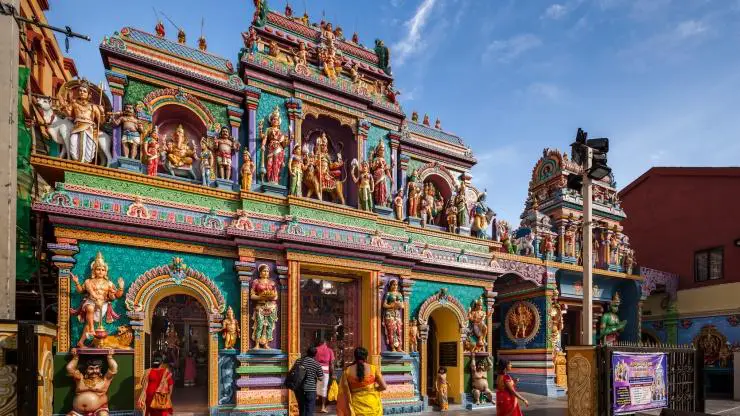
Finally, at the end of Serangoon Road near Farrer Park MRT station is Mustafa Center, known for its chaotic shopping experience that is unique to Singapore. Locals and expats consider Mustafa Center as a place where you can find anything and everything, from clothing to groceries, jewelry, and furniture. Although the layout of Mustafa may not be the most organized, it is a one-of-a-kind shopping experience. Be mentally prepared for the chaos before entering.
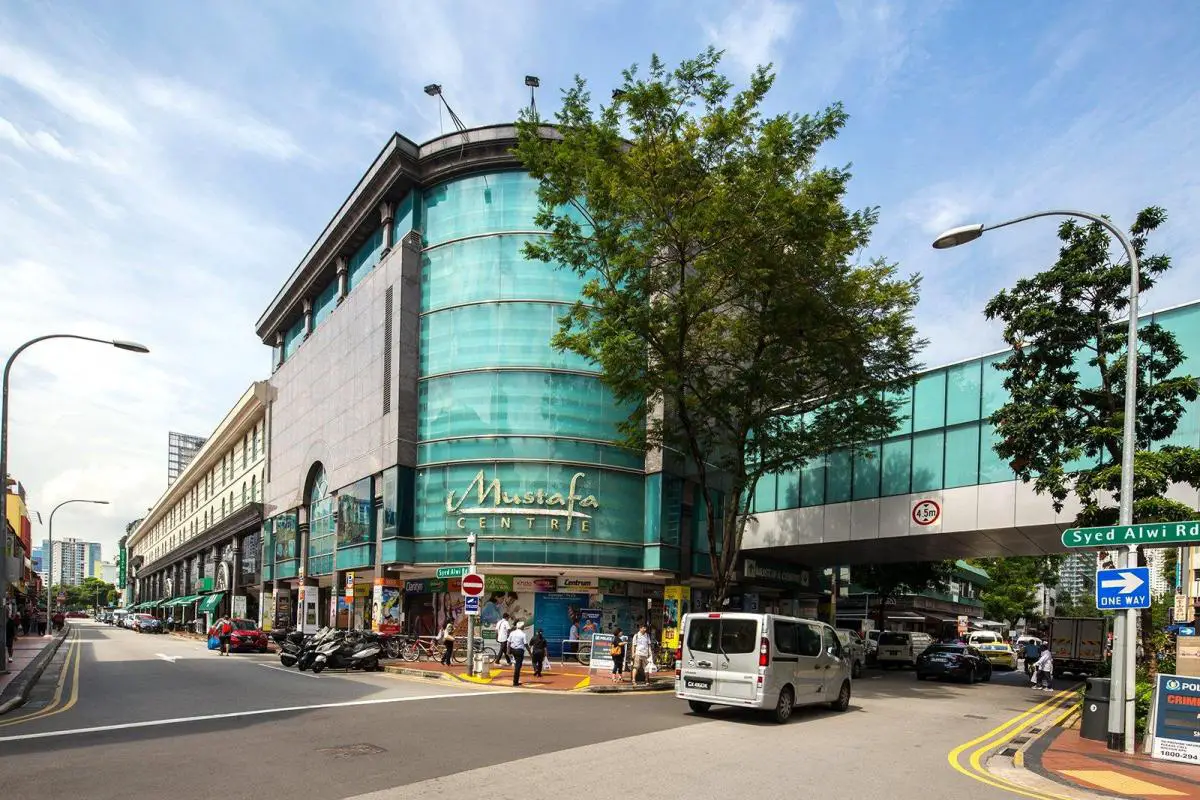
Truth be told, there isn’t that much to see in Little India so you probably won’t need more than 1 hour to visit the main sights.
Day 2 Afternoon: Take the Cable Car To Sentosa Island
One of my favorite activities to do in Singapore is to take the wonderful Singapore cable car. This gondola system takes people from the Mount Faber on the Singaporean mainland through the Keppel Bay to the resort island of Sentosa. Whether you’re visiting Sentosa or not, the cable car is a cheap way to get some of the most stunning views of the city you can find. Plus I just love cable cars in general with my favorite one being in La Paz, Bolivia.

The cable car system in Singapore consists of two lines: the Mount Faber Line and the Sentosa Line. The Mount Faber Line runs from the mainland to Mount Faber, while the Sentosa Line takes riders from Mount Faber to Sentosa Island. Both lines offer panoramic views of the city, making it a popular tourist attraction for those looking to experience a bird’s-eye view of the city.
One of the main attractions of the cable car ride is the stunning views it provides. The cable cars offer a unique perspective of the city, with views that can’t be seen from the ground. As you travel from the mainland to Mount Faber, you’ll have the chance to see the city’s skyline, as well as the beautiful harbor and surrounding islands. The views from the cable car are particularly stunning at sunset, when the city lights up and the sky turns a beautiful shade of orange and pink.

The cable car system in Singapore is also known for its modern technology and safety features. The cable cars are equipped with state-of-the-art technology, making them safe and reliable. They also have large windows, providing plenty of opportunities to take in the views as you travel. Additionally, the cars are air-conditioned, making them comfortable even on hot and humid days.
The cable car ride is also a great option for those looking for a unique way to explore Sentosa Island. Sentosa is a popular tourist destination, known for its beautiful beaches, exciting attractions, and lush green spaces. With its stunning views, the cable car ride is a great way to see the island from above. As you travel from Mount Faber to Sentosa, you’ll have the chance to see the island’s lush forests, beautiful beaches, and unique attractions.
Another great feature of the cable car ride is that it offers a number of photo opportunities. With its stunning views, it’s a great place to take pictures and capture memories. Whether you’re looking to take pictures of the city skyline, the beautiful harbor, or the lush forests and beaches on Sentosa Island, the cable car ride offers plenty of opportunities to snap a few photos.
For the Mount Faber Line, a one-way ticket for an adult costs SGD 8.5, while a round-trip ticket costs SGD 15. Children and senior citizens can enjoy discounted prices.
For the Sentosa Line, a one-way ticket for an adult costs SGD 4, while a round-trip ticket costs SGD 7. Children and senior citizens can also enjoy discounted prices.
Day 2 Dinnertime
Another day, another opportunity for dinner with some of the most delicious foods you’ll find. One of my favorite foods in Singapore is the famous chili crab.
This timeless dish is unique to Singapore and features soft shelled crab cooked in an ultra flavorful chili sauce. It’s one of the most iconic dishes in Singapore.
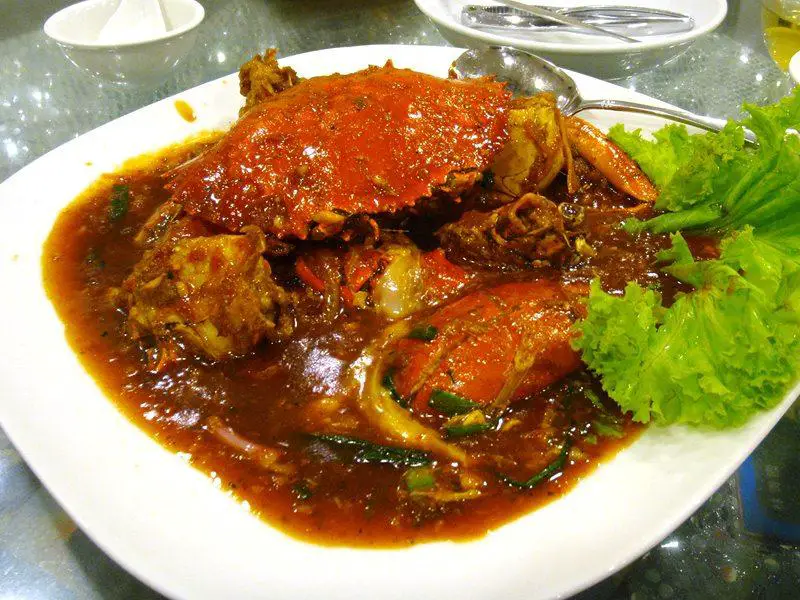
You can get chili crab in many different restaurants but it is a more special occasion dinner so it’s not available everywhere. Prepare to spend a bit more money as well for crabs which are dependent on the supply and demand of the time. Some popular restaurants include Jumbo Seafood, Holy Crab, Long Beach Seafood, Palm Beach Seafood.
If you are a big group of people, make sure to try chili crab and pepper crab as well which is similar in style but with different flavors. I might actually prefer pepper crab over chili crab!
Day 2 – 9:00pm: Watch the lightshow at the Marina Bay Sands
After dinner, make your way back to the Marina area and witness the incredible Spectra light show. This beautiful display of lights and water sprays happens daily at 8:00pm and 9:00pm. On Fridays and Saturdays, it runs three times with a 10pm showing.
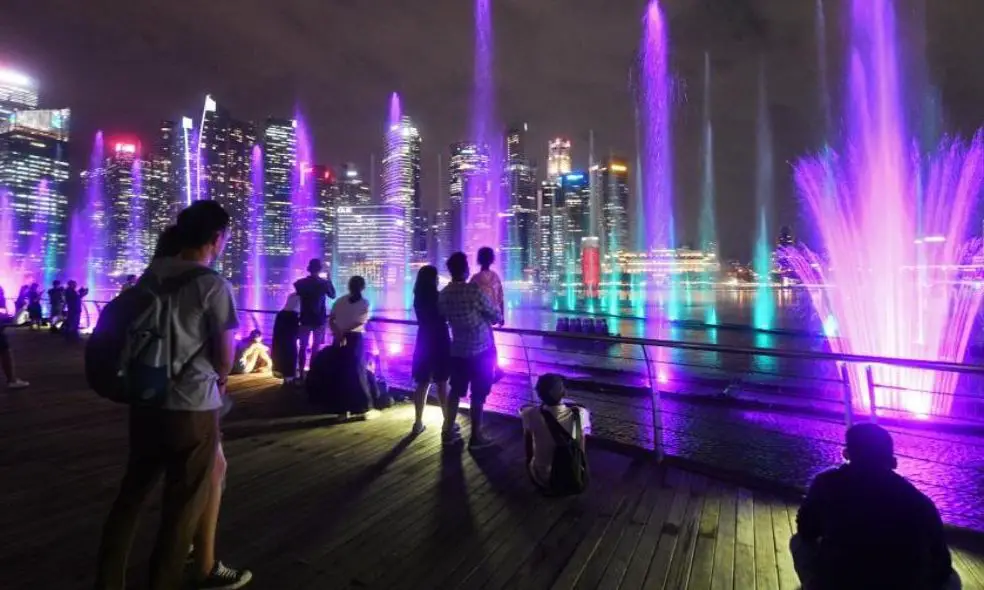
This beautiful lightshow happens directly in front of the Marina Bay Sands mall on the pier next to the Louis Vuitton store. It is completely free and is open to the public. Just make sure to get there early so you can score good seats.
This lightshow dazzles and impresses with multiple lasers projected over fountain jets that propel water tens of meters high. This light show lasts 15 minutes and is accompanied by orchestral music. All the while, you can enjoy the views of the Singaporean skyline in the back drop.
Have a cocktail at one of the many trendy bars in Singapore
If you feel like the night shouldn’t end yet, don’t worry because there is plenty more left to do. Singapore is home to a number of very upscale and beautiful cocktail bars. In fact, there are a few cocktail bars consistently ranked in the world top 50 list.
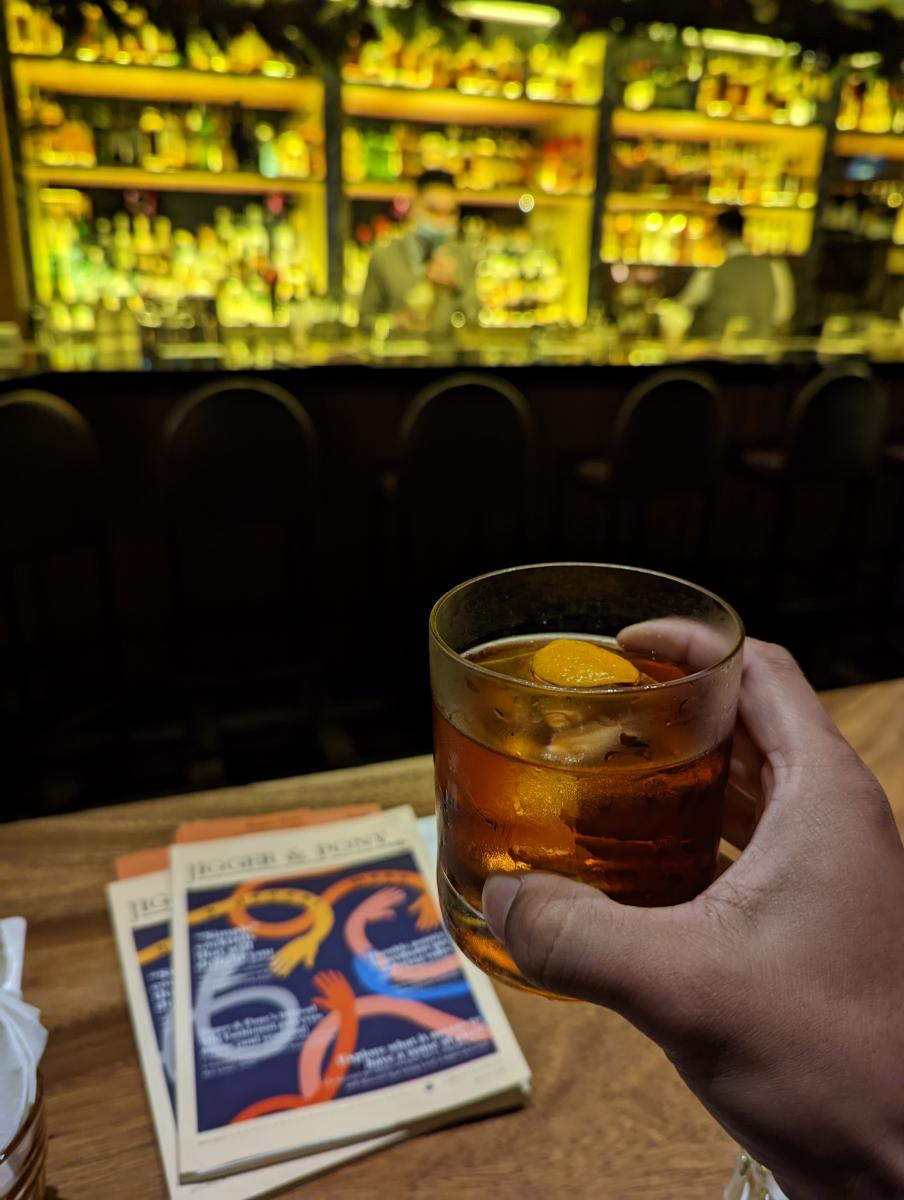
Drinking in Singapore is expensive as it is heavily taxed. Expect to pay $25-30 SGD per drink at one of these upscale places. Here are some of my favorite cocktail bars in Singapore:
- Atlas Bar
- 28 Hong Kong Street
- Jigger And Pony
- Tippling Club
Jigger and Pony is ranked the top bar in all of SE Asia and took the #12 spot in the world’s top cocktail bars.
Atlas Bar is located in a historic Parkview Square which is designed in a traditional Art Deco style. The bar itself looks straight out of a movie set from the 1920s. While most places in Singapore are laid back about dress codes, this place enforces a shoes only policy.
Day 3 – Morning: Visit the Botanical Gardens of Singapore
The Singapore Botanical Gardens is the mother of all parks in this city. Spanning 82 hectares of green space, the Botanical Gardens is a UNESCO world heritage site that’s home to thousands of plant species from SE Asia and around the world, including rare orchids and ancient trees. It’s many times the size of the Cloud Forest at the Gardens by the Bay.

Visitors can also explore the evolution garden, rainforest, and children’s garden. The Botanic Gardens also offers educational programs and events such as guided tours, workshops, and concerts. It is a popular destination for both locals and tourists, offering a peaceful escape from the bustling city while providing a glimpse into the diverse world of plants and nature.

The Botanical Gardens is one of my favorite places to take visitors who have more than a day. It’s a bit out of the way from the other sights so it’s best to dedicate at half the day to visiting the gardens. While you’re there, make sure to explore these gardens:
- National Orchid Garden: This garden is home to over 60,000 orchids and is the largest display of orchids in the world.
- Evolution Garden: This garden showcases the evolution of plant life and features various species of plants from different periods in time.
- Rainforest: This garden offers a glimpse into the lush rainforest environment and features various species of tropical plants and trees.
- Children’s Garden: This garden is designed for children and features interactive exhibits, play areas, and educational programs.
- Healing Garden: This garden features plants that are commonly used for medicinal purposes and includes a range of herb species, as well as a reflexology path.
- Ginger Garden: This garden is dedicated to ginger plants and features a wide range of species and cultivars.
Day 3 – Afternoon: Shopping along Orchard Road
Orchard Road is a shopping district located in the heart of Singapore and is known as one of the best shopping destinations in Asia. The 2.2-kilometer street is lined with numerous shopping malls, department stores, and specialty shops, making it a shopper’s paradise. From high-end luxury boutiques to affordable street-side stalls, there’s something for everyone in Orchard Road.

Some of the most popular shopping malls in Orchard Road include ION Orchard, Ngee Ann City, and Wisma Atria, which offer a wide range of international and local brands. These malls feature high-end luxury labels such as Chanel, Gucci, and Prada, as well as more affordable options like H&M, Uniqlo, and Zara.
Orchard road is famous in Singapore and locals come here in droves on the weekend as mall shopping is jokingly referred to as the national sport. I’m not a big fan of malls per se but I know this is a popular destination for tourists and locals alike!
Day 3 Sunset: Visit the Merlion Park and Clarke Quay
The Merlion Park is a popular tourist destination located in the heart of Marina Bay in Singapore. It is named after the famous Merlion statue, which is a symbol of Singapore’s heritage as a fishing village and its present status as a modern city-state. The statue stands at 8.6 meters tall and has the head of a lion and the body of a fish, reflecting the city’s name, which is derived from the Malay words “Singa” (lion) and “Pura” (city).

The park offers breathtaking views of Marina Bay and the city’s skyline, making it a popular spot for both locals and tourists. Visitors can take in the views from the terrace and the observation deck, which provides a 360-degree panoramic view of the surroundings.
The Merlion statue is lit up at night and is a popular spot for taking photos and selfies. The park is surrounded by several restaurants, bars, and souvenir shops, making it a great place to stop and relax after a long day of exploring the city.
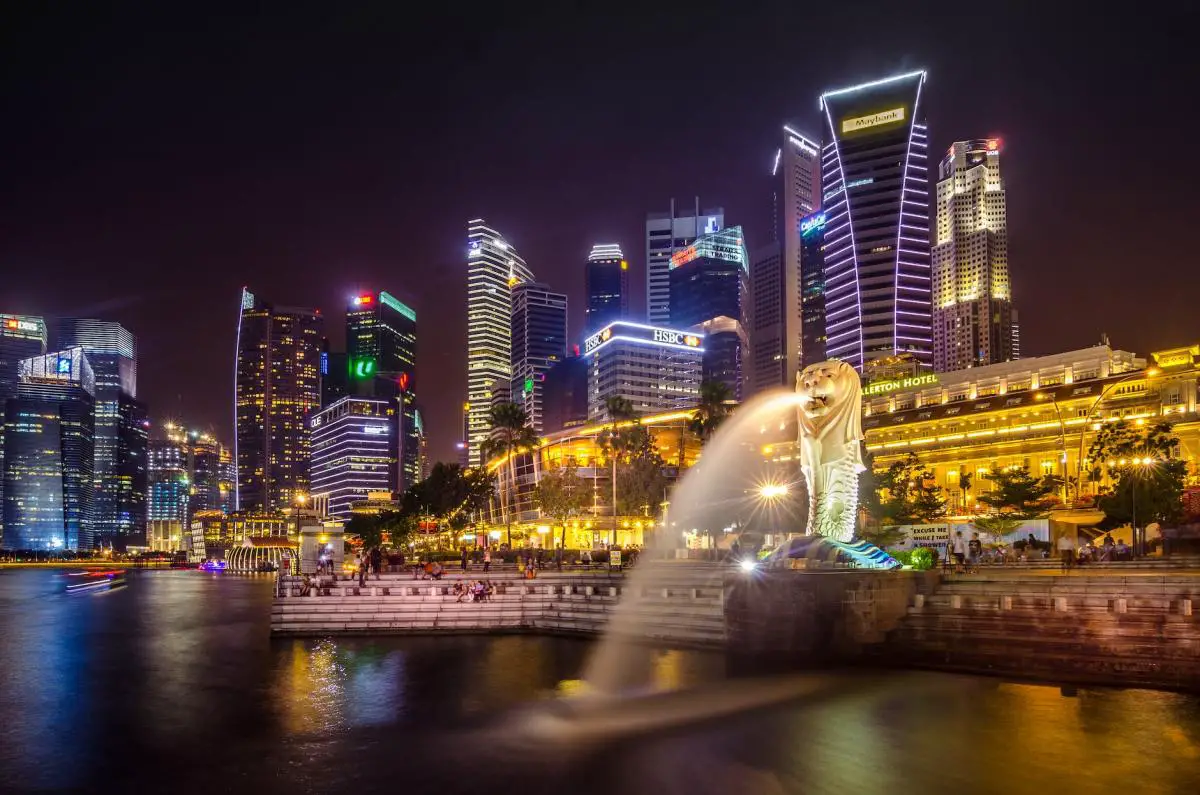
Visitors can also take a guided tour of the park, where they can learn about the history and symbolism of the Merlion statue and the surrounding area. The park is easily accessible by public transportation and is open 24 hours a day.
Two day Singapore Itinerary
That sums it up for the three day Singapore itinerary. If you’re only here for two days, it is still better than running through all the sights in 1 day but you’ll have to cut out a few of the things on this itinerary or just prepare to see everything back to back!
Day 1 of 2:
8:00 AM – Start your day by having breakfast and then visiting the Malay district of Kampong Glam before heading over to Little India.
11:00am – Take the MRT to Chinatown where you can soak in the sights of historic Chinatown.
12:30pm – Have lunch at Chinatown hawker center which is filled with all the culinary delights of Singapore.
2pm – Visiting the Gardens by the Bay, a 101-hectare park located near the Marina Bay waterfront. Here, you can explore the Cloud Forest, a cool-moist conservatory that features a 35-meter tall mountain covered in vegetation, as well as the Flower Dome, which is home to exotic plants from all over the world.
5:00pm – Walk through Marina Bay Sands mall to enjoy the shops before taking the elevator up to the top of the hotel with breathtaking views of Singapore
7:00 PM – Enjoy dinner at one of the many hawker centres in the city, such as Lau Pa Sat and enjoy their famous outdoor satay market
9:00pm – Enjoy the famous light show on the water at the Marina Bay Sands mall.
Day 2 of 2:
9:00 AM – Start your day by visiting the Singapore Botanical Gardens, home to over 10,000 species of plants from around the world including many rare orchids and tree species.
12:00 PM – Lunch at one of the famous hawker markets in the city like Maxwell hawker center.
2:00 PM – Take the Singapore cable car to Sentosa island
6:00 PM – Visit the Merlion, a statue that is symbol of Singapore and is located at the Merlion Park. I love coming here around the sunset hour as the colors are beautiful.
7:00 PM – Have a typical Singaporean chili crab or pepper crab dinner. There are many option around the city.
9pm and onwards – Have a cocktail at one of the many top end cocktail bars in the city located in Tanjong Pagar area.
Where to stay in Singapore?
Singapore has no shortage of amazing hotels to stay. As Singapore is not a cheap destination, expect to pay quite a bit for your hotel stay especially if you want to stay central. Even the hostels in Singapore will be pricey albeit much cheaper than a full service hotel. For the best locations, I recommend to stay in the central area where you can walk to most of the main destinations of Singapore.

The MRT (subway) and bus system is very comprehensive and reliable in Singapore so staying further away to save money is definitely feasible. Taxis are also very cheap given how expensive the rest of the city is.
Note that Airbnb is 100% illegal in Singapore. If you find any apartments on Airbnb, they are 100% illegal. You might find a place to stay, but know that you are staying in that apartment illegally with you and the host being held liable.




